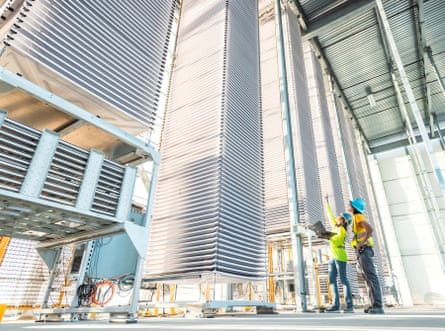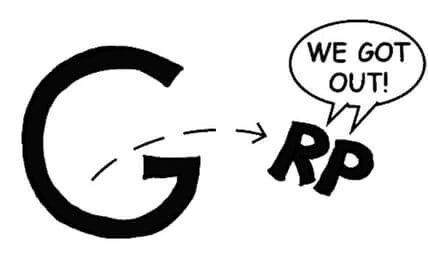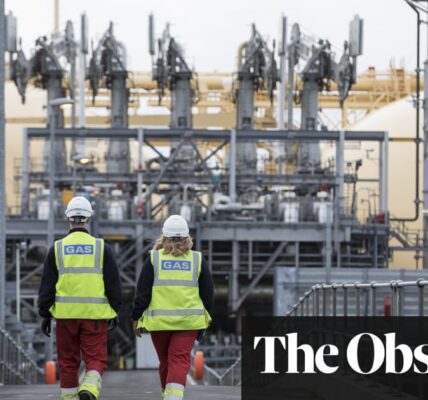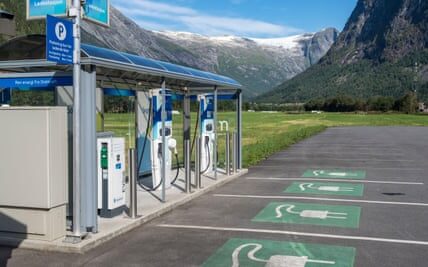A new climate solution has been launched by a US facility that aims to remove carbon from the atmosphere.
Rows of neatly stacked trays filled with gray powder tower high inside a sprawling new warehouse located in Tracy, California.
Heirloom is a company that utilizes limestone to extract carbon dioxide from the air and securely store it in concrete, effectively preventing it from entering the atmosphere. The plant, known as the first commercial direct air capture (DAC) facility in the US, officially launched last week.
In the past, the concept of capturing and storing carbon from the atmosphere seemed unrealistic. However, now it is viewed as a necessary method for addressing the climate emergency by scientists and government officials. There is a significant influx of funding from both private and public sectors, with the Biden administration pledging $3.7 billion to launch Direct Air Capture (DAC) and other initiatives aimed at removing carbon from the US.
The facility owned by Heirloom utilizes limestone, the second most plentiful mineral on Earth, to absorb carbon from the atmosphere. This process involves heating the limestone in industrial kilns to 1,650F (899C), causing it to separate into carbon dioxide and calcium oxide.
After being captured, carbon dioxide is stored in concrete for potential use in construction. The excess calcium oxide is then placed on trays, watered, and left out to absorb carbon from the air. This cycle repeats as heat is used to extract the newly collected carbon.

Other direct air capture systems use huge fans to pull air, and Heirloom says it uses a few but that their system takes less energy because it leverages limestone’s natural ability to pull carbon molecules out of the air.
Shashank Samala, the CEO of Heirloom, was motivated to take action against climate change due to his upbringing in south-east India. Growing up amidst heatwaves and droughts, he hopes that the warehouse will be just the beginning of their efforts. He stresses the significance of finding a solution with a meaningful and widespread impact on climate change, in order to make a significant difference.
It may take a while to make a significant impact. The facility has the capacity to take in up to 1,000 metric tons of CO2 per year, which is only a small portion of the emissions produced by a gas-fired power plant annually. The company’s goal is to remove 1 billion tons of carbon dioxide by 2035, but Samala acknowledges that increasing their capacity at such a pace will be difficult. To achieve their objectives in the next 12 years, they will need to triple their capacity every year.
Increasing in size will require financial resources, and technology companies are investing in direct air capture. Microsoft has entered into a lengthy agreement with Heirloom to remove up to 315,000 metric tons of CO2, in order to compensate for the company’s own carbon emissions and achieve its net-zero objectives. A fund named Frontier has committed $46.6 million to Heirloom and another carbon-capture project.
The company, Heirloom, claims to be powered by renewable energy from a nearby provider and has a policy against accepting investments from oil and gas companies. While carbon captured from DAC plants can be utilized to improve oil extraction, this goes against the company’s beliefs. Samala states, “We recognized the need for leadership and values in this field and wanted to ensure that the carbon dioxide extracted from the air is not used as justification for adding more CO2 into the atmosphere.”

Heirloom has received a $600m award from the Department of Energy to build a hub in Louisiana that can process up to a million tons a year. The facilities are modular, Samala says, so it’s a matter of putting limestone on larger trays and stacking more trays.
Farzan Kazemifar, a mechanical engineer at San José State University, states that there are still challenges in effectively reducing carbon dioxide emissions. The process of direct air capture is costly and requires a significant amount of energy. Additionally, due to the small amount of carbon that is removed from the atmosphere, a large volume of air and strong fans are needed to extract the carbon.
Brad Sageman, an earth and planetary scientist at Northwestern University, acknowledges that the atmosphere is vast and direct air capture technology is limited, making the economics of implementing it difficult. However, he stresses the importance of exploring all potential solutions to the climate crisis, as even if we are able to successfully utilize them all, there is still uncertainty surrounding whether or not we can truly resolve the issue.
Samala believes that it is important for the global community to recognize the potential of direct air capture and its ability to address environmental concerns. He suggests that, similar to how city governments fund the collection of garbage, individuals should also consider paying for the removal of the carbon emissions they generate. He emphasizes the need for accountability and responsibility, stating that we should be willing to pay for the CO2 that we release into the atmosphere.
Source: theguardian.com



